You can contact LEARNZ, part of CORE Education, at:
Postal Address:
PO Box 13 678,
Christchurch 8141,
New Zealand
<- Homepage: Bioblitz: What's in your backyard?
Photos appear here each day from the Diaries of the Bioblitz online field trip.
Other pages with photos:
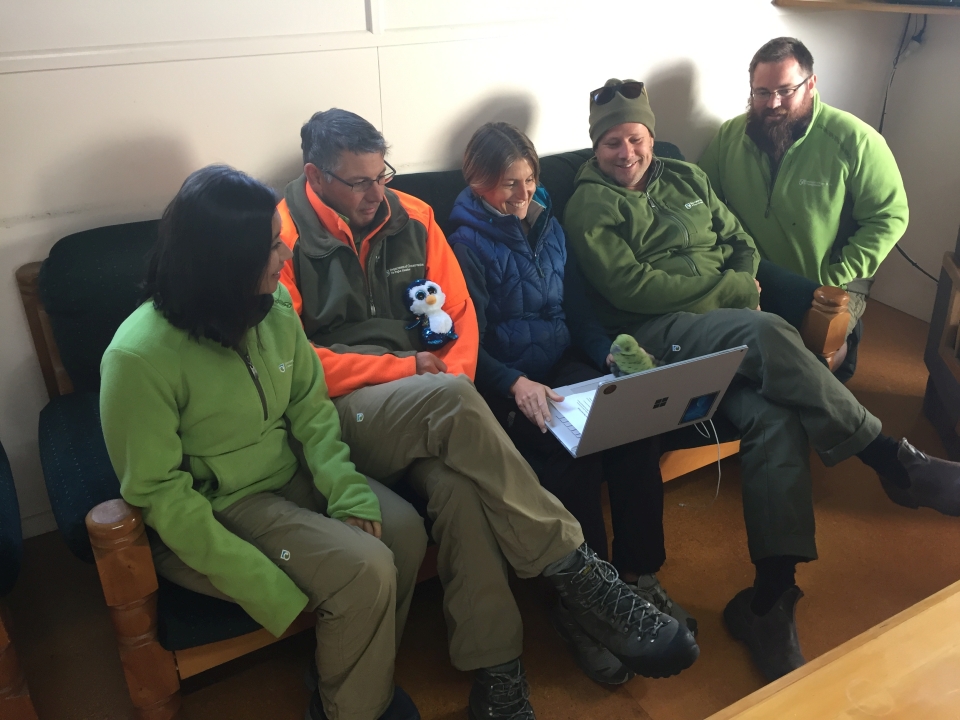
Nancy, Brad, Shelley, Ian and Damien answer questions from Otatara School during the last field trip web conference. Image: Andrew Penny, LEARNZ.

This area of Ō Tū Wharekai is being restored with native plants. Why are plastic sleeves placed around the plants? Image; Shelley Hersey, LEARNZ
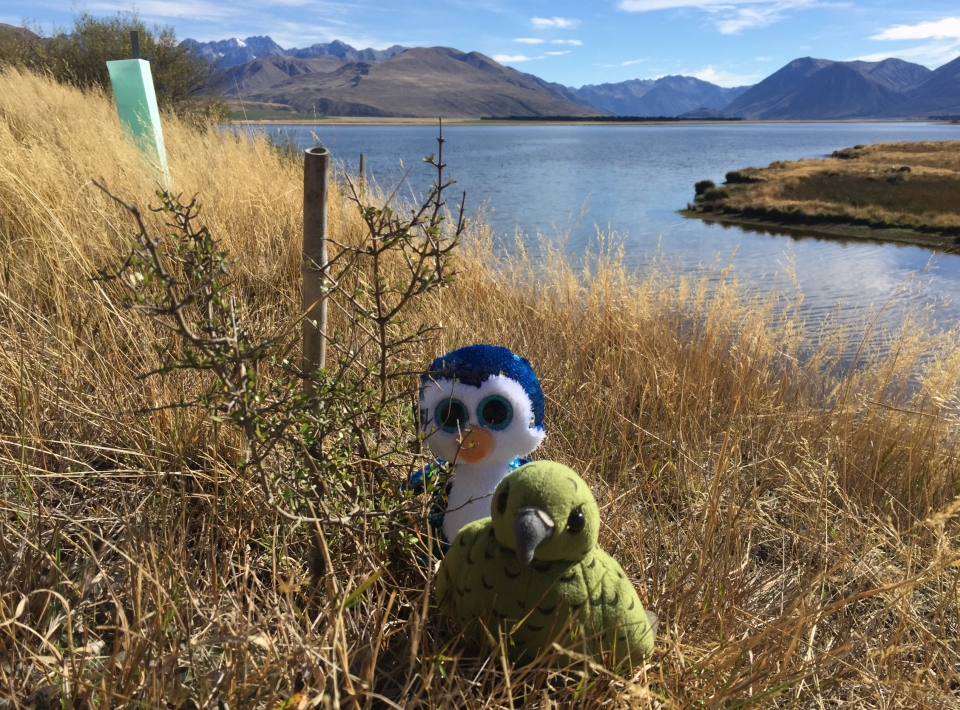
The ambassadors Pengu and Māia check out one of the native coprosmas that have been planted beside Lake Heron. Image: Shelley Hersey, LEARNZ.
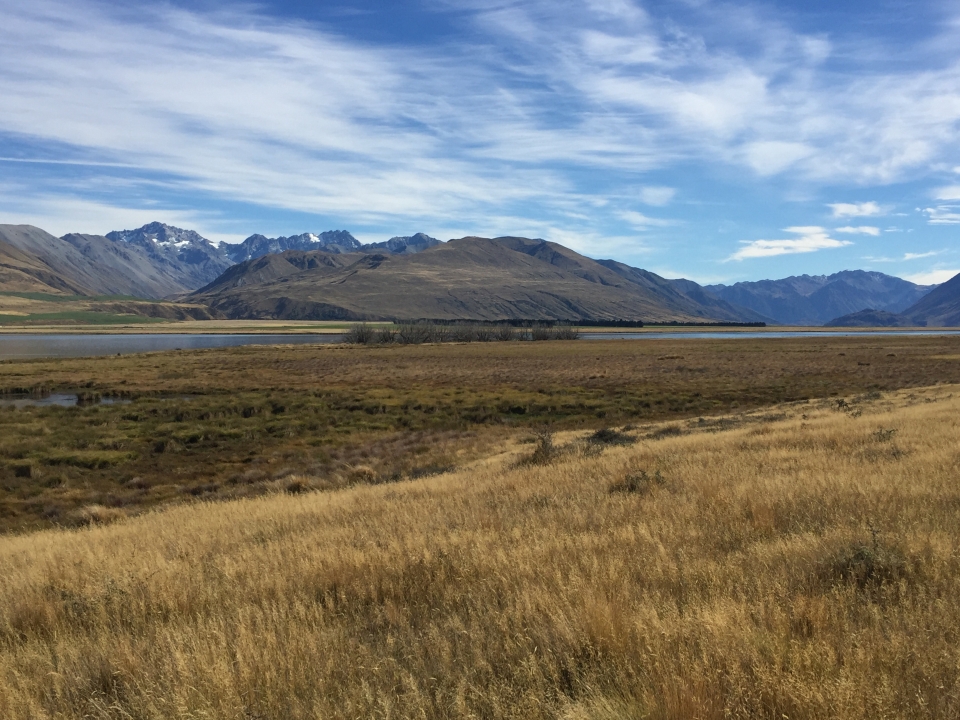
In the distance you can see a line of dead willow trees. Why do you think these willow trees have been killed? Image: Shelley Hersey, LEARNZ.
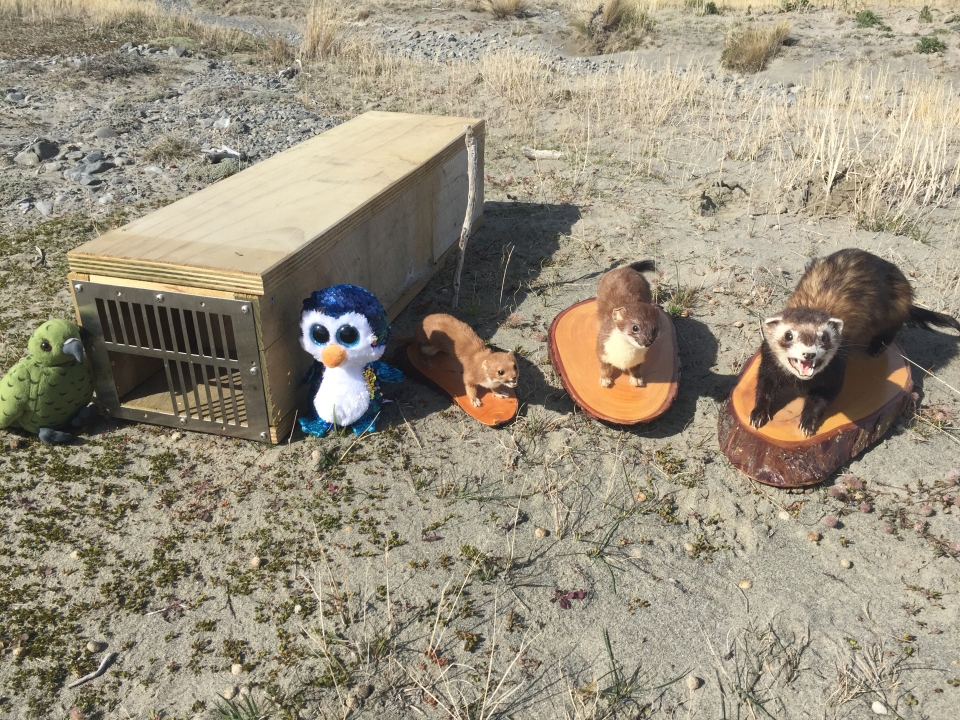
The ambassadors check out a trap for predators such as this weasel, stoat and ferret. Why are these predators a problem? Image: Shelley Hersey, LEARNZ.
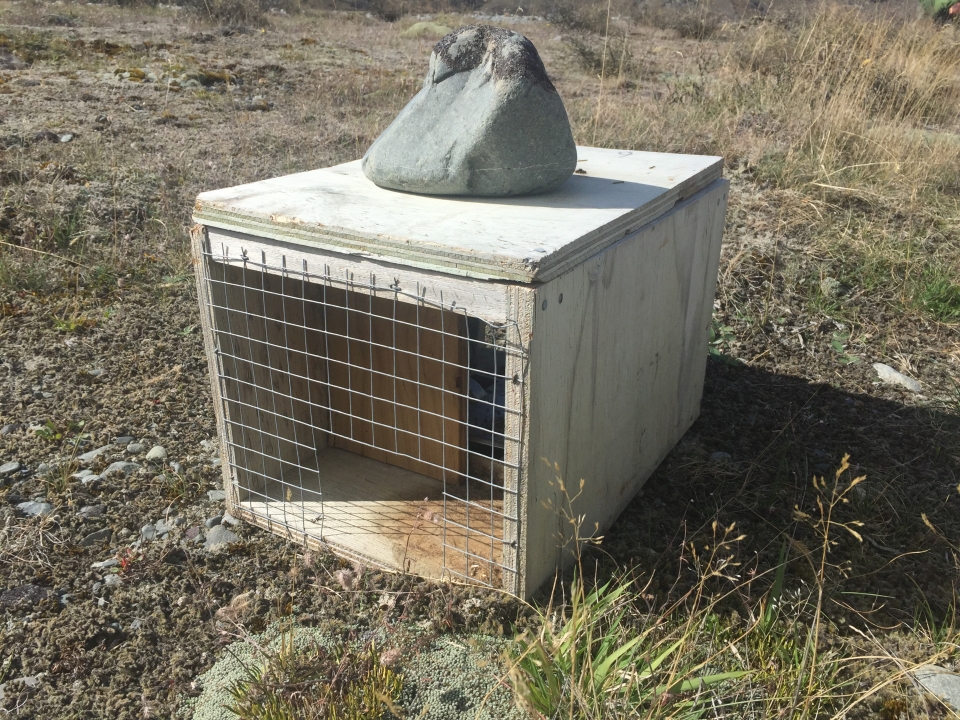
This is a DOC trap used to reduce predator numbers in Ō Tū Wharekai. Image: Shelley Hersey, LEARNZ.
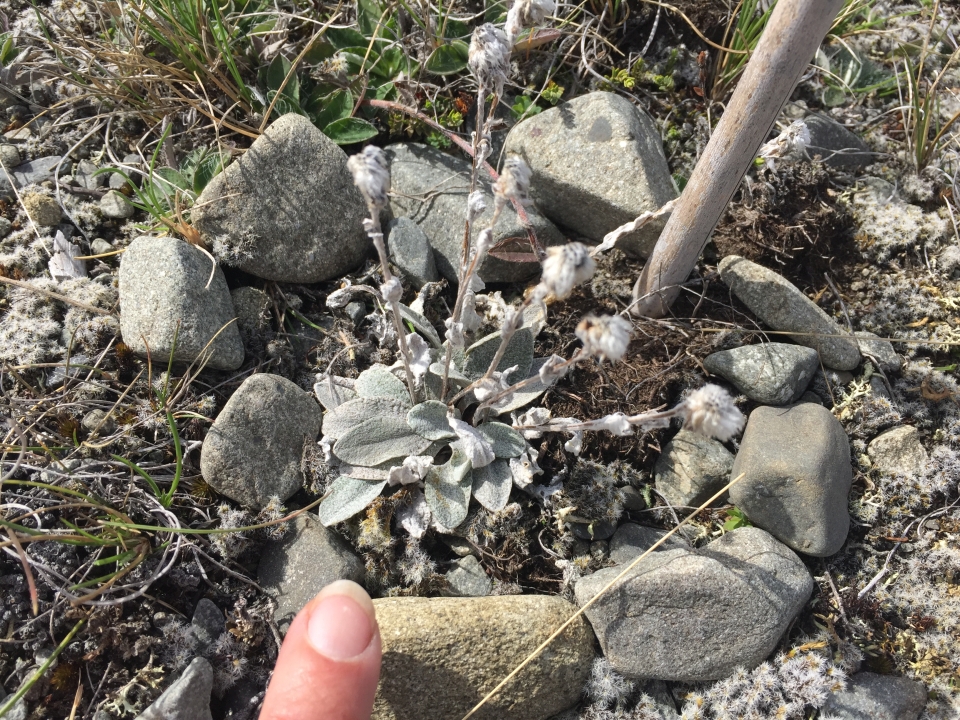
This is a herb called Craspedia heron which is only found in Ō Tū Wharekai. Image: Shelley Hersey, LEARNZ.

Nancy weeds around some of the Craspedia heron plants which have been grown from seed. What is the fence for? Image: Shelley Hersey.
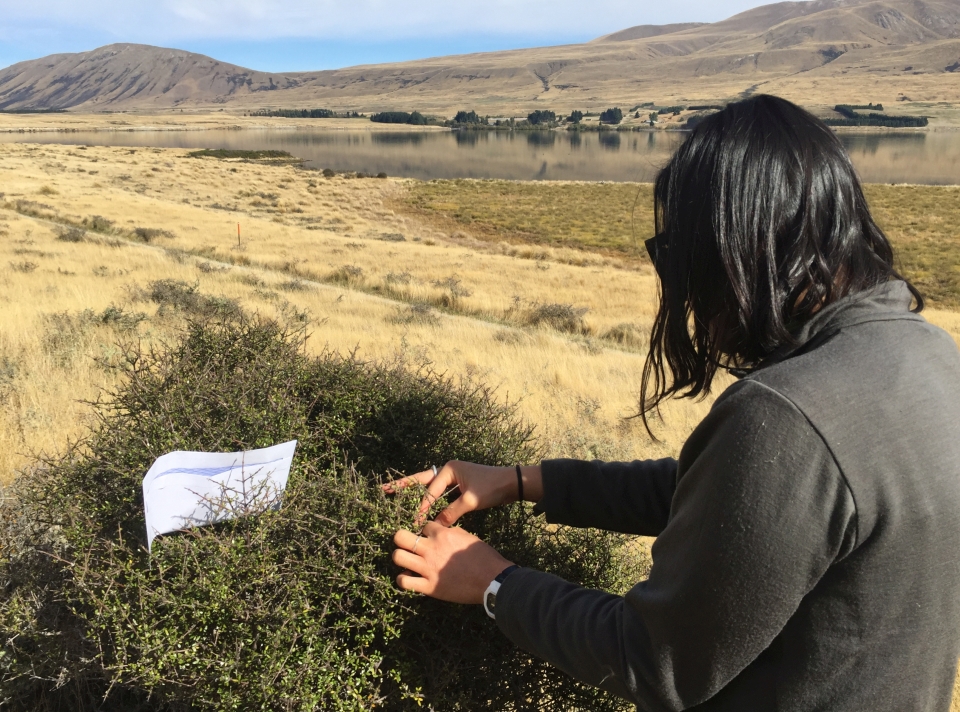
Nancy collects the berries from a coprosma so she can grow more of these plants. This is called eco-sourcing seeds. Why is eco-sourcing important? Image: Shelley Hersey, LEARNZ.

Brad caught this boulder copper butterfly during the BioBlitz. It is one of the smallest native butterflies in New Zealand. Image: Brad Edwards.

Damien, Brad, Shelley, Nancy and Ian enjoy answering West Park School students' questions during today's web conference. Image: Andrew Penny, LEARNZ.
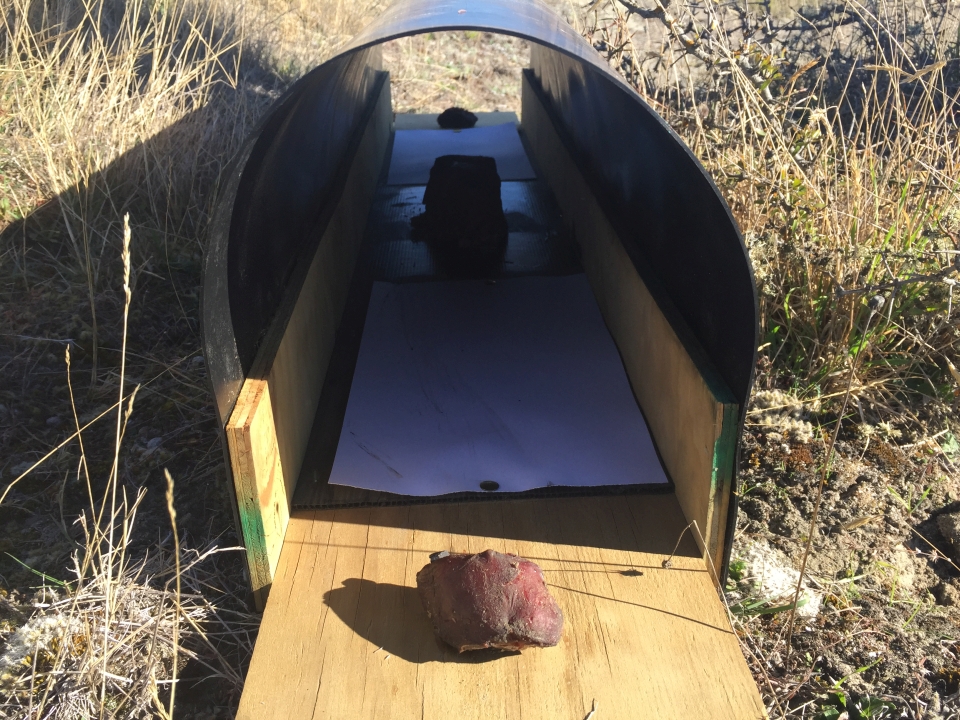
This large tracking tunnel was set up to try and attract animals such as wild cats. Why are wild cats a problem in this area? Image: Shelley Hersey, LEARNZ.
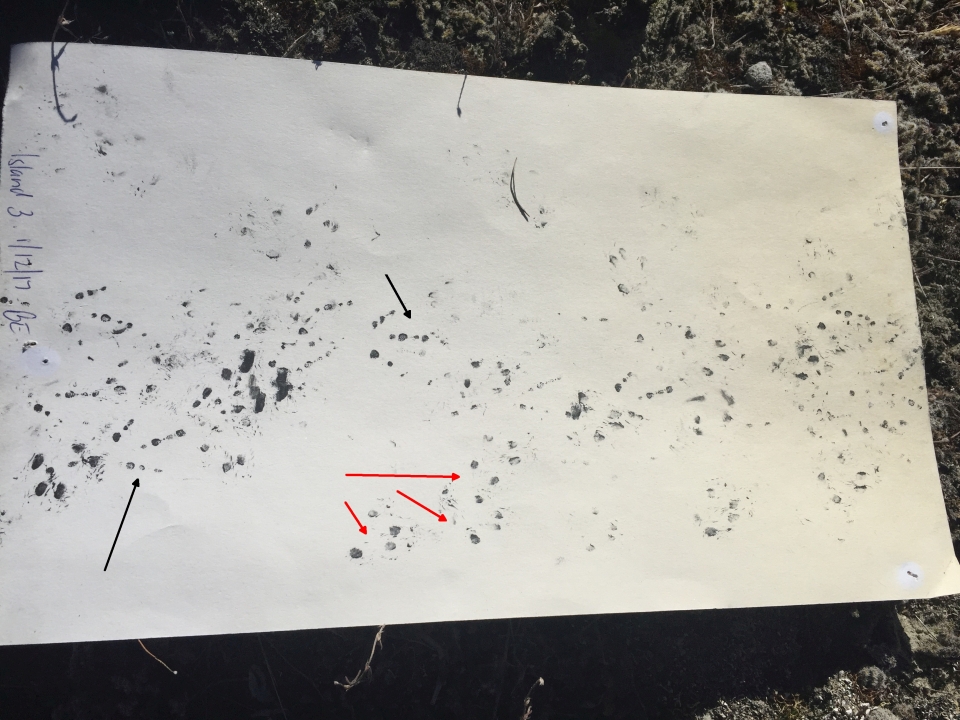
Tracking tunnels record animal footprints. The red arrows point to stoat paw prints while the black arrows point to wrybill footprints. Image: Shelley Hersey, LEARNZ.
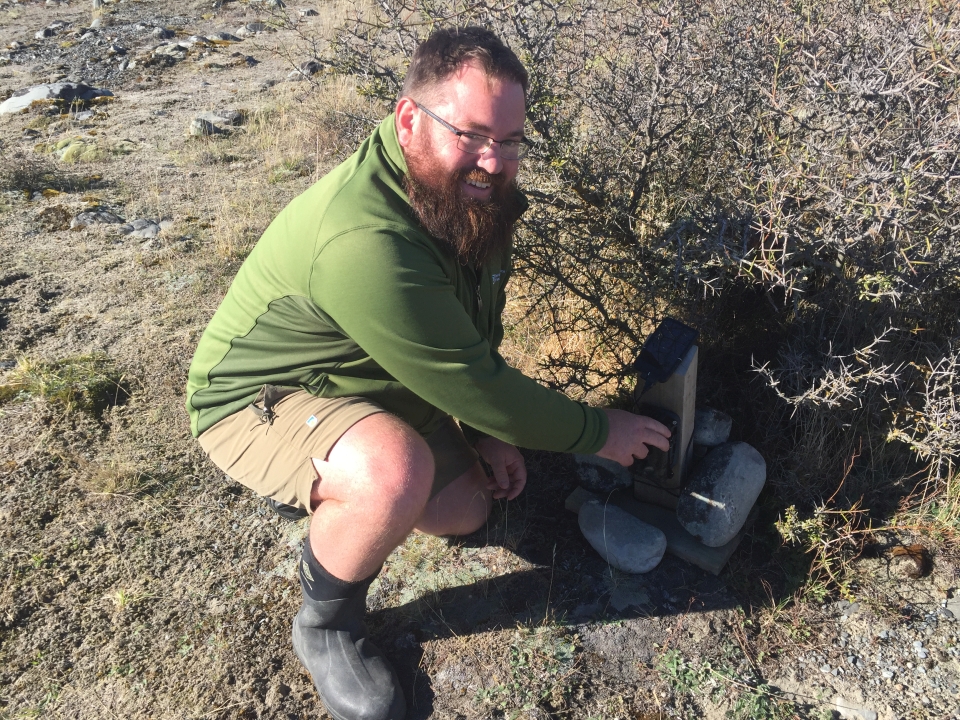
Damien checks one of the trail cameras. What animals might you expect to see on this camera? Image: Shelley Hersey, LEARNZ.
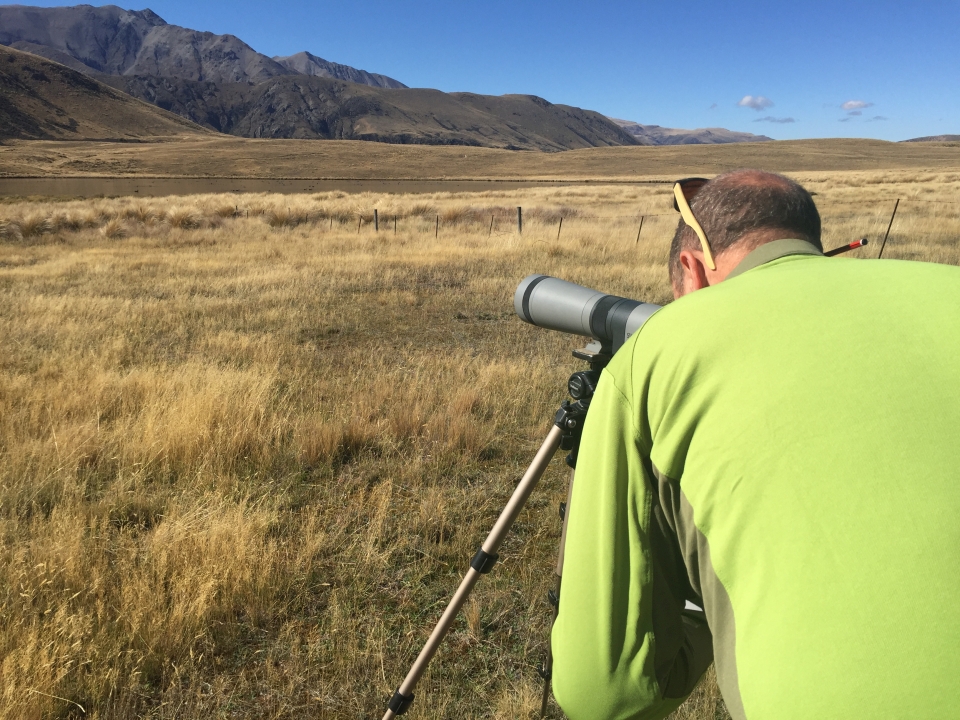
Ian looks for birds at Lake Emily. What birds do you think he will see in this habitat? Image: Shelley Hersey, LEARNZ
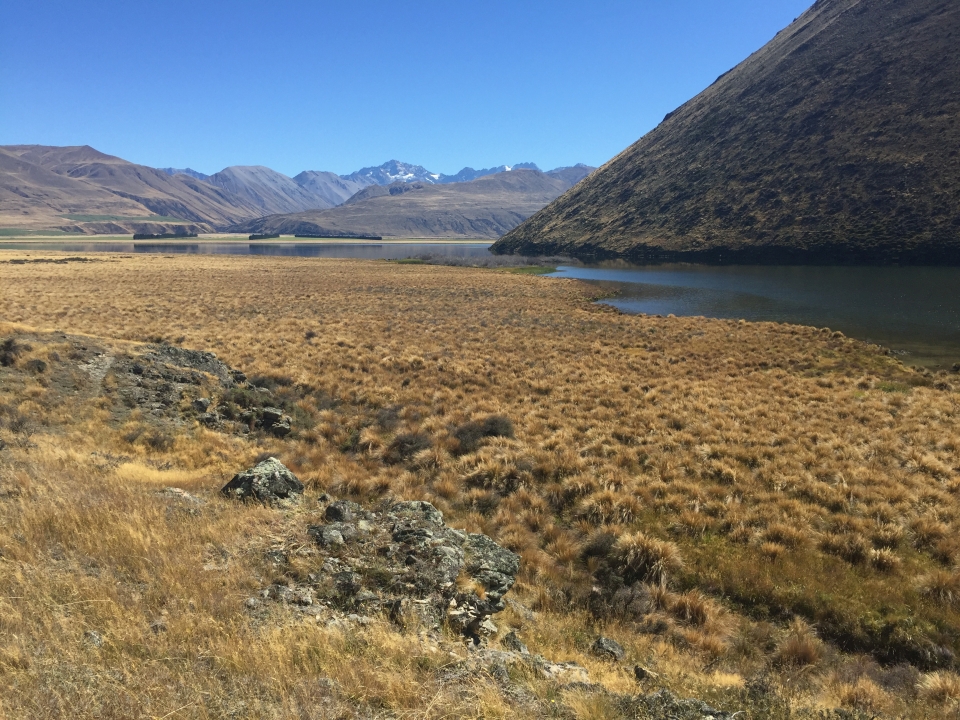
Looking out over a wetland area alongside Lake Heron in Ō Tū Wharekai. Image: Shelley Hersey, LEARNZ.
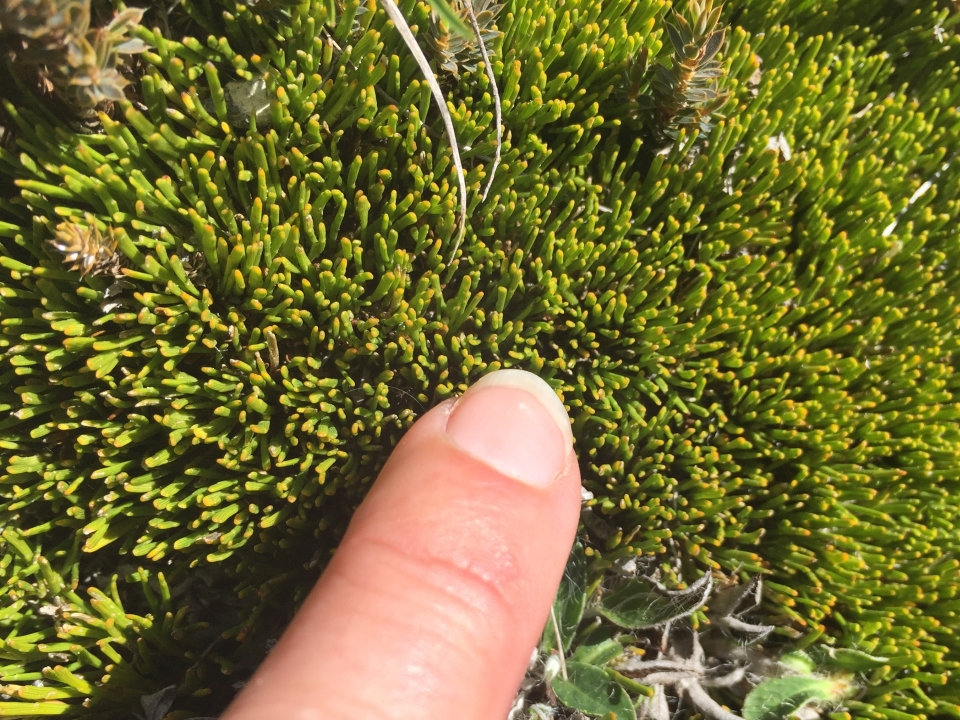
This is a native broom species growing in Ō Tū Wharekai. What adaptations does this plant have? Image: Shelley Hersey, LEARNZ.
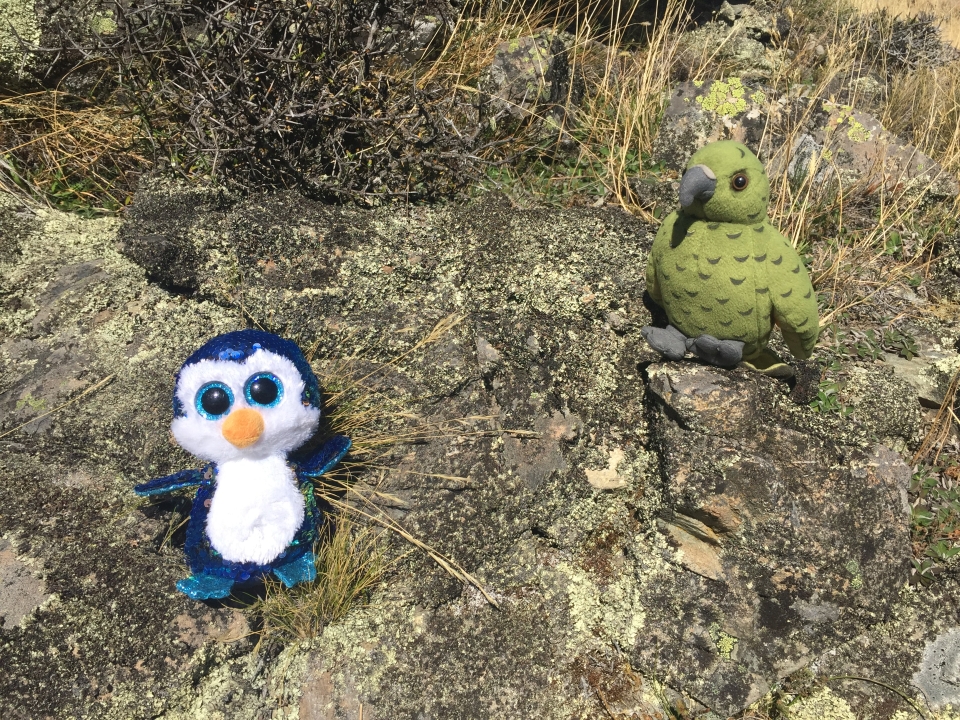
The ambassadors find some lichen growing on rocks in Ō Tū Wharekai. What is special about lichens? Image: Shelley Hersey, LEARNZ.

This is a mountain stone wētā. What adaptations do these invertebrates have to help them survive harsh winters in Ō Tū Wharekai? Image: Shelley Hersey, LEARNZ.

This is a stonefly nymph which was caught using a kick net. A stone fly has a two part tail, while a mayfly has three. Image: Shelley Hersey.
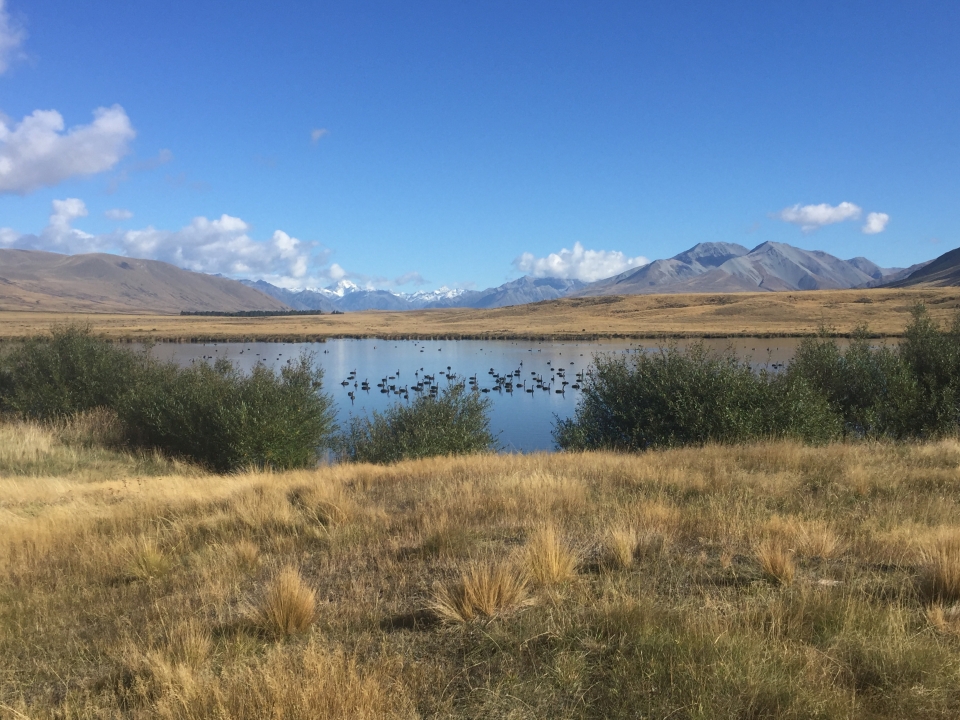
You started your BioBlitz at Lake Roundabout in Ō Tū Wharekai. What birds can you identify in this photo? Image: Shelley Hersey, LEARNZ.
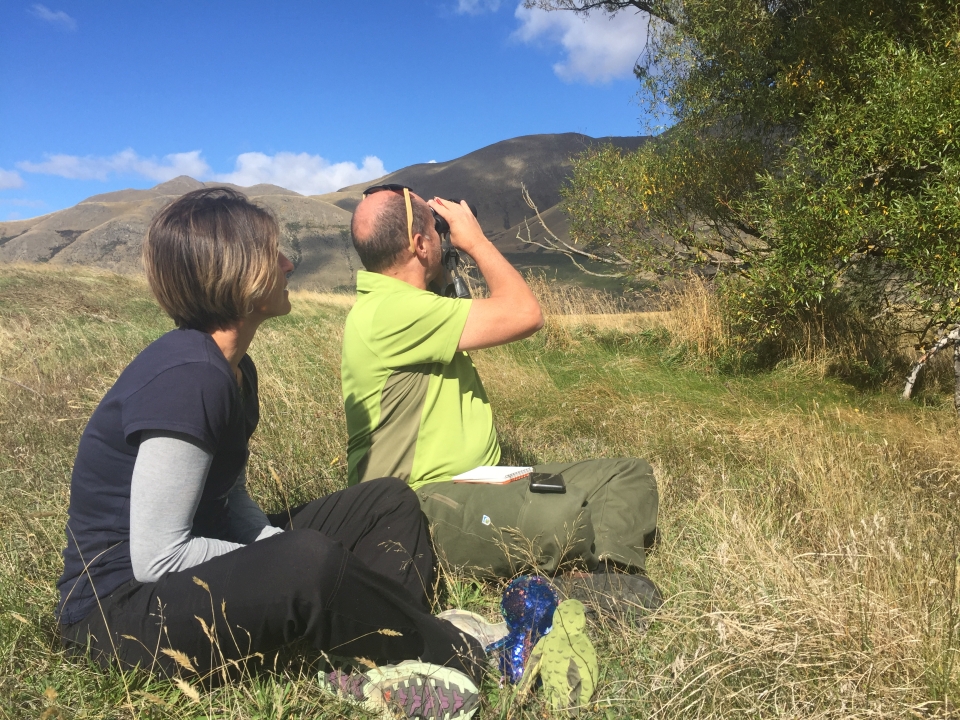
Ian shows Shelley and the ambassadors how to find and record birds by sitting quietly, using binoculars and listening for bird calls. A notebook was used to record different species. What birds do you think they saw? Image: Shelley Hersey, LEARNZ.
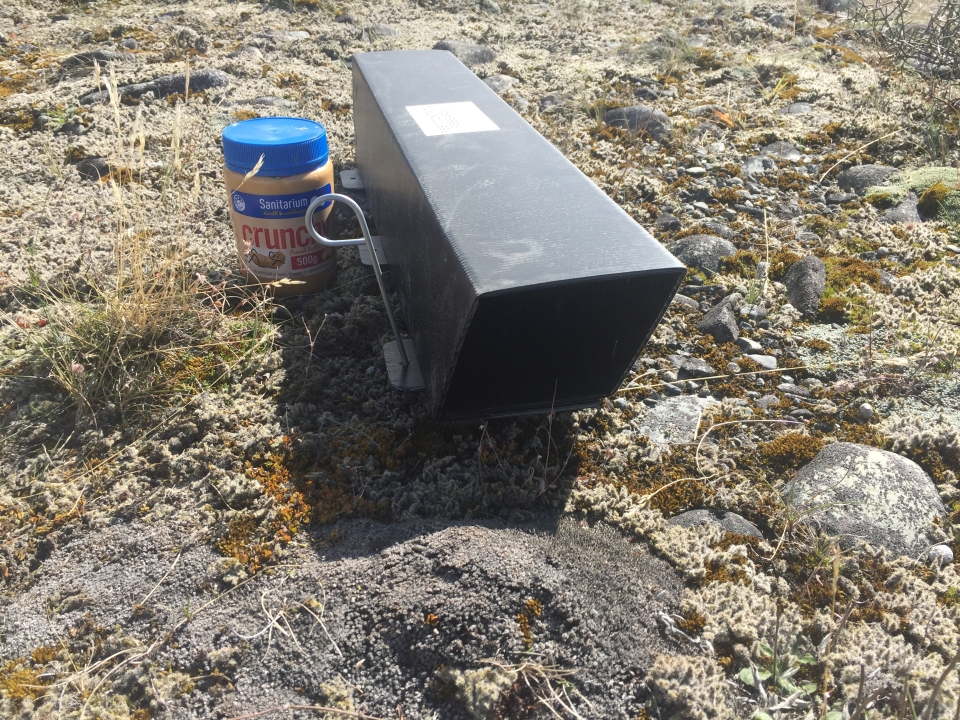
This tracking tunnel has been set up with peanut butter as bait. A card with ink on it will record animal footprints. What animals do you think we will find? Image: Shelley Hersey, LEARNZ.
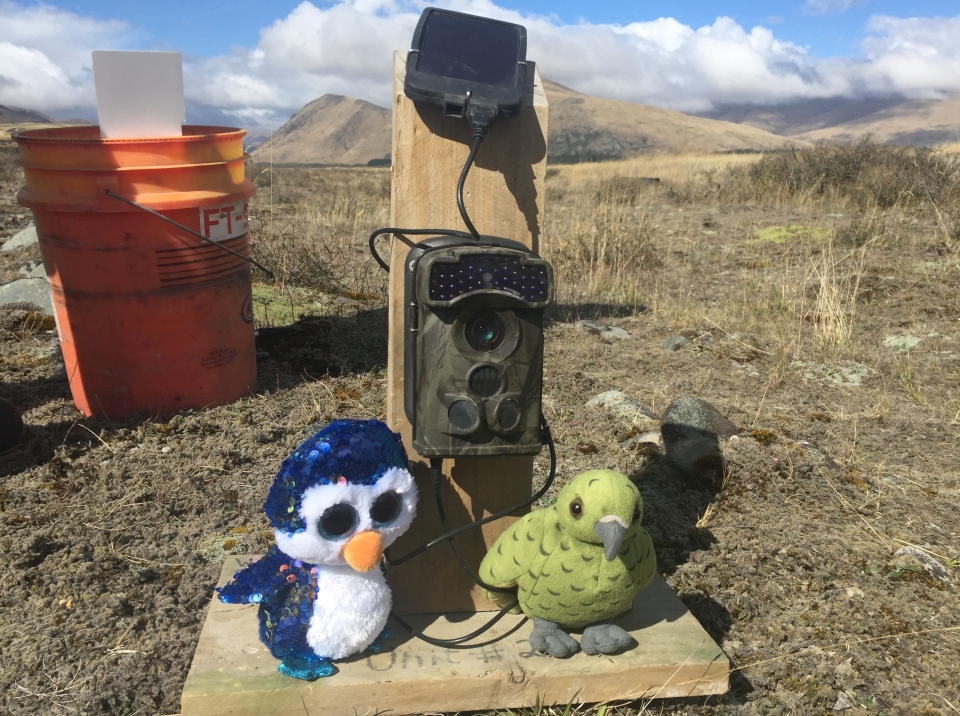
Pengu and Māia check out the trail camera that can be set up to monitor predators. How does this camera work? Image: Shelley Hersey, LEARNZ.

Brad uses a sweep net to catch insects flying above the tussock. Image: Shelley Hersey, LEARNZ.

This is a pitfall trap ready to have the lid placed on top and trap any animals that accidentally fall in. Why do you think pieces of wet sponge have been placed in the trap? Image: Shelley Hersey, LEARNZ.
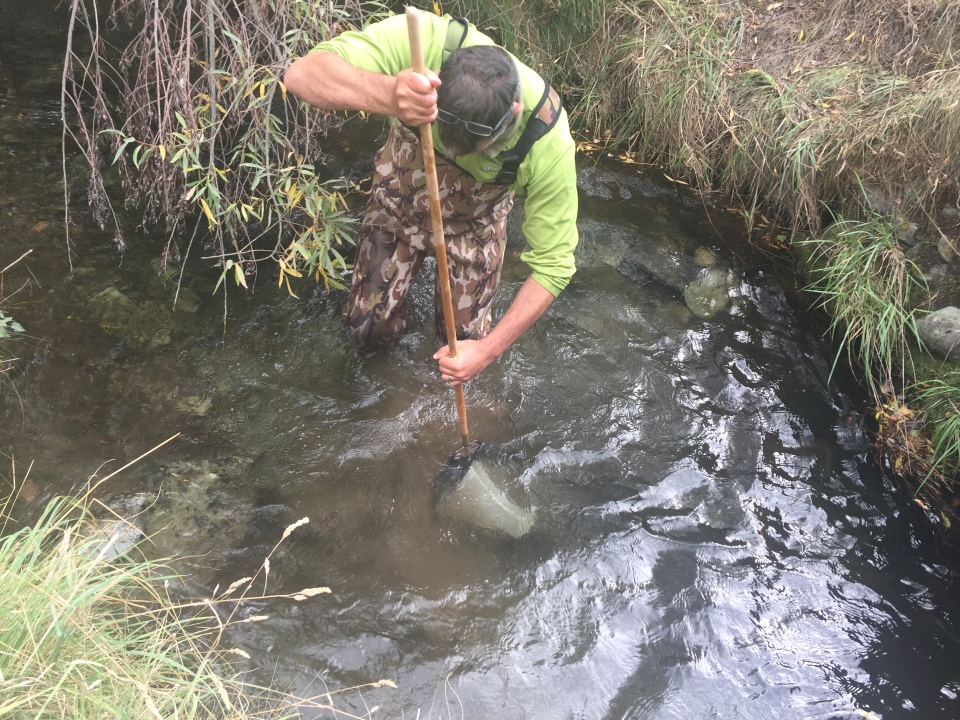
Brad uses a kick net to catch aquatic invertebrates. What invertebrates do you think he will find? Image: Shelley Hersey, LEARNZ.

Brad finds a dobsonfly or toe biter. You can see the external gills that run along each side of its body. Image: Shelley Hersey, LEARNZ.
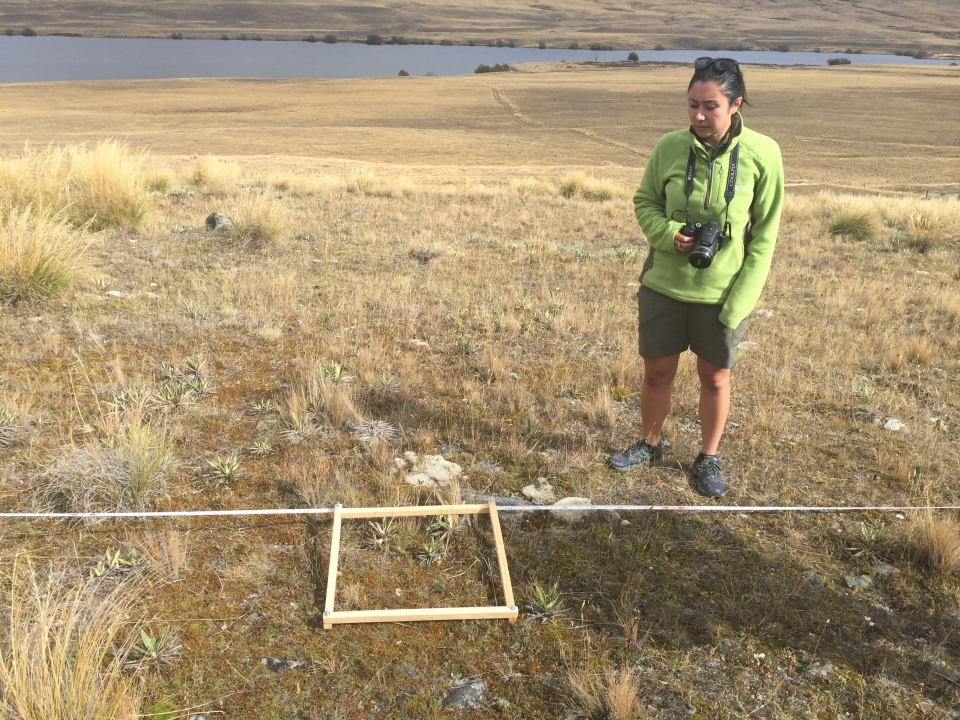
Nancy shows you how to sample plants by using a transect line and quadrat. Why do you think it is helpful to use this equipment? Image: Shelley Hersey, LEARNZ.
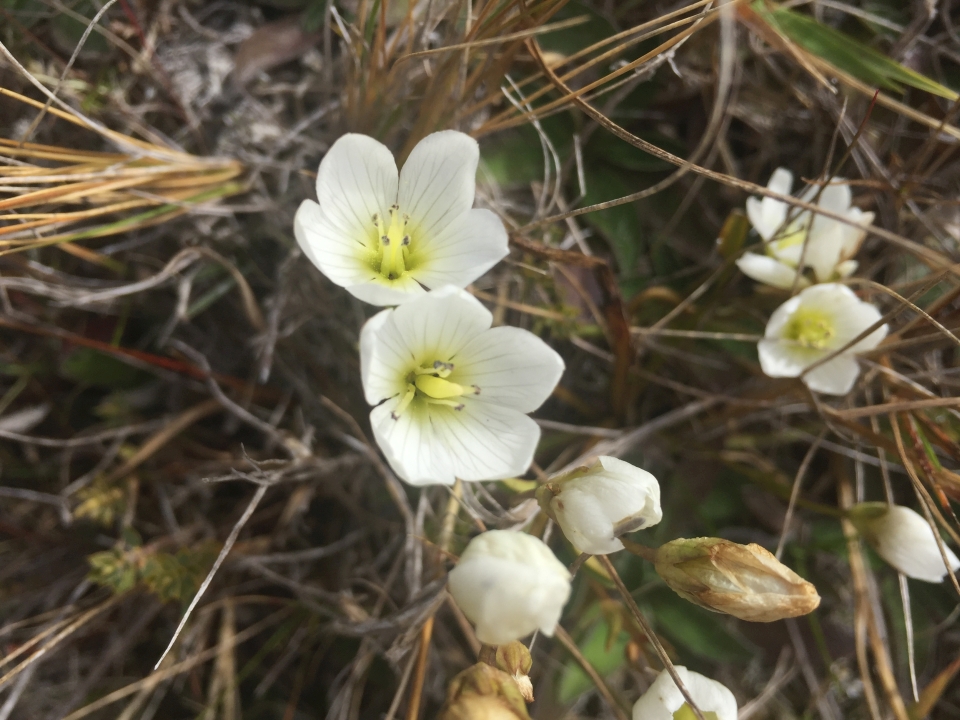
You found some gentians that were still flowering. Why do you think many of the flowers in alpine areas are white? Image: Shelley Hersey, LEARNZ.
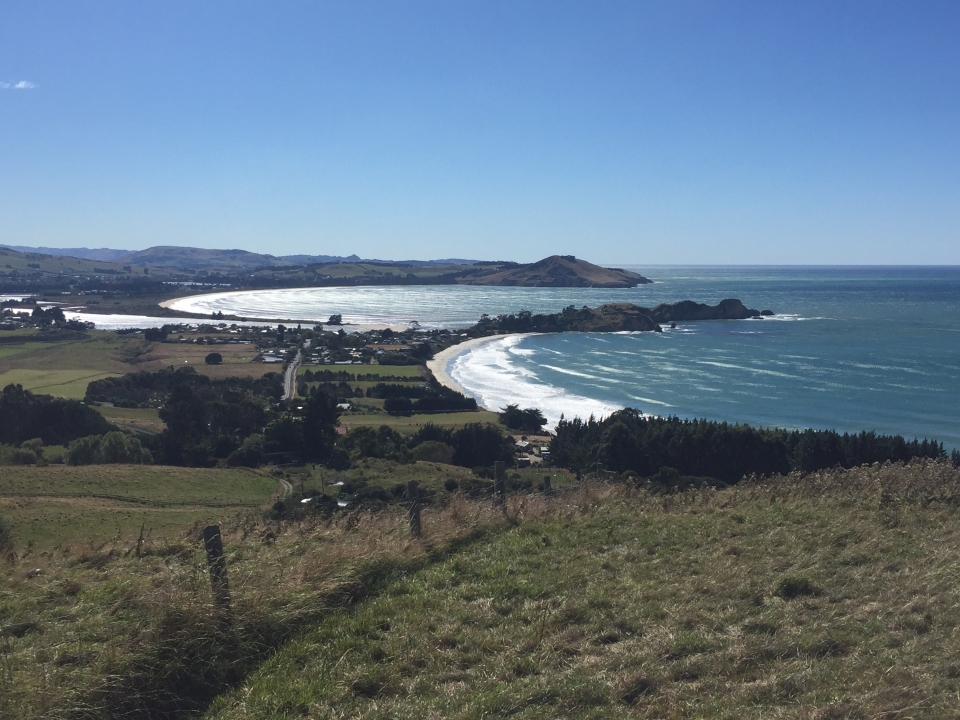
Looking out over the coastal town of Karitāne north of Dunedin. You could see huge swell lines coming into the bay. Image: Shelley Hersey, LEARNZ.
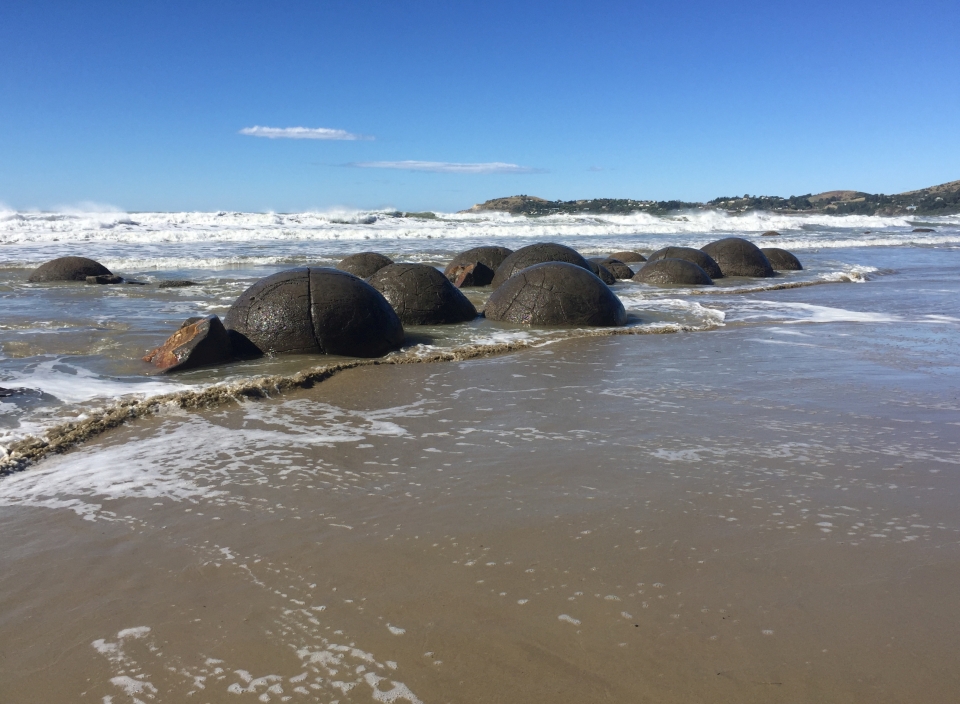
You had time to visit the famous Moeraki Boulders during your drive north. Image: Shelley Hersey, LEARNZ.
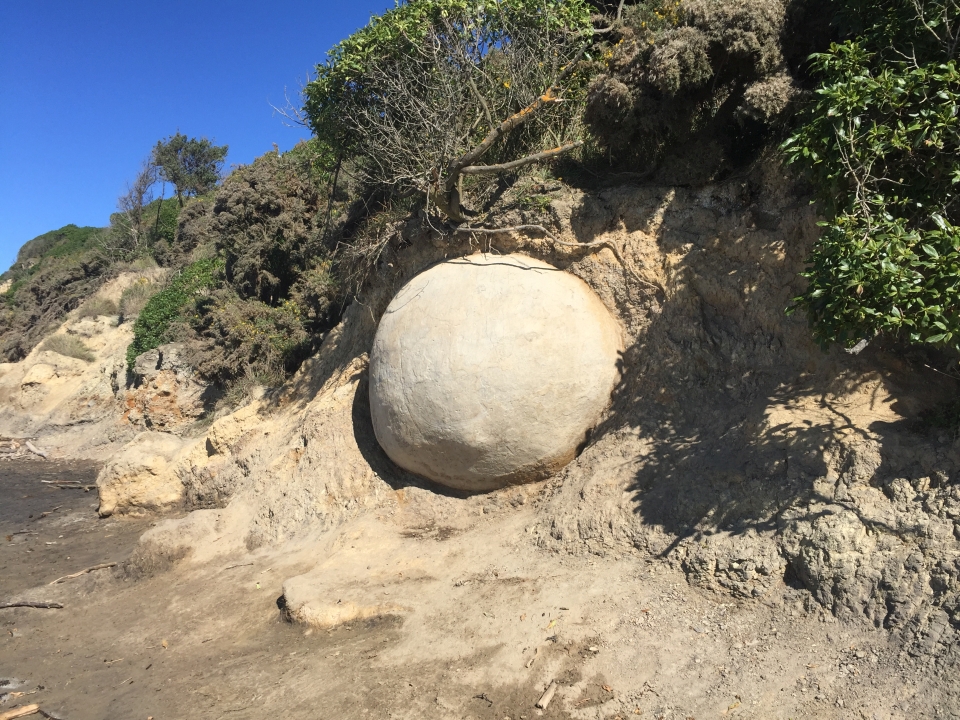
The Moeraki Boulders are very old. They formed on the sea floor, this area was then uplifted. The sea has worn away at the cliffs, returning the boulders to the sea. Image: Shelley Hersey, LEARNZ.
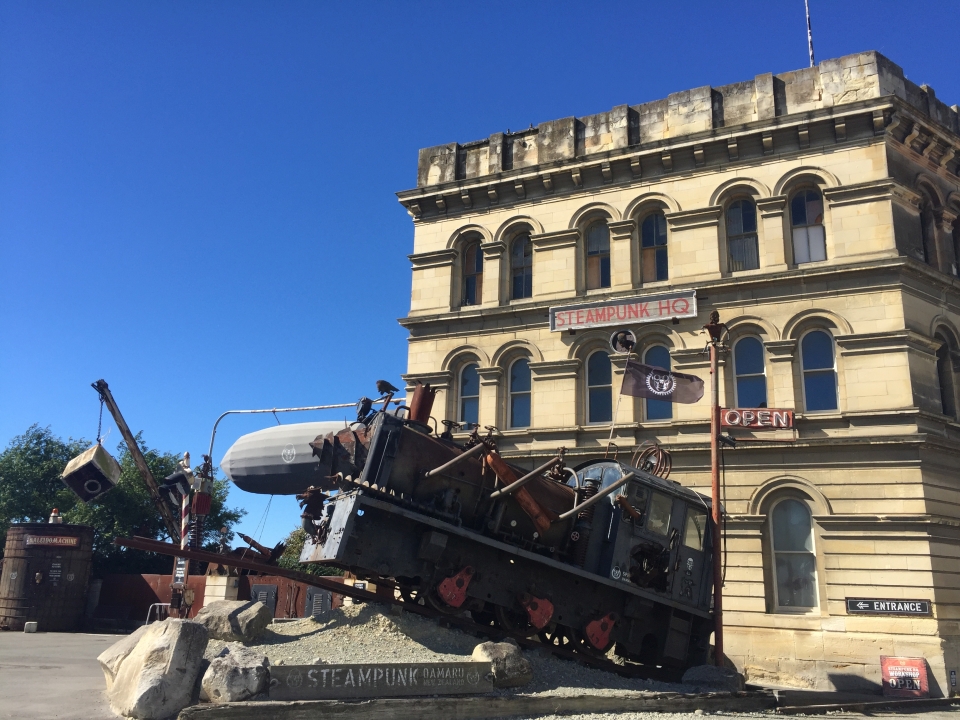
Oamaru is the Steampunk Capital of New Zealand. Can you describe what steampunk is? Image: Shelley Hersey, LEARNZ.
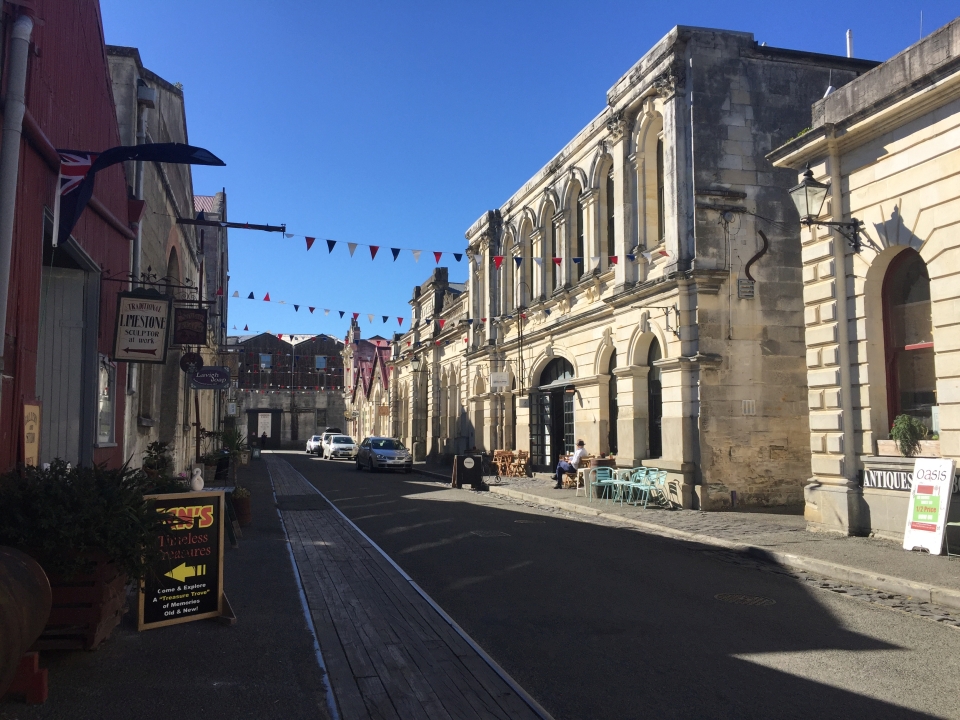
The historic buildings of Oamaru have become a tourist attraction and are a great place to explore. Image: Shelley Hersey, LEARNZ.
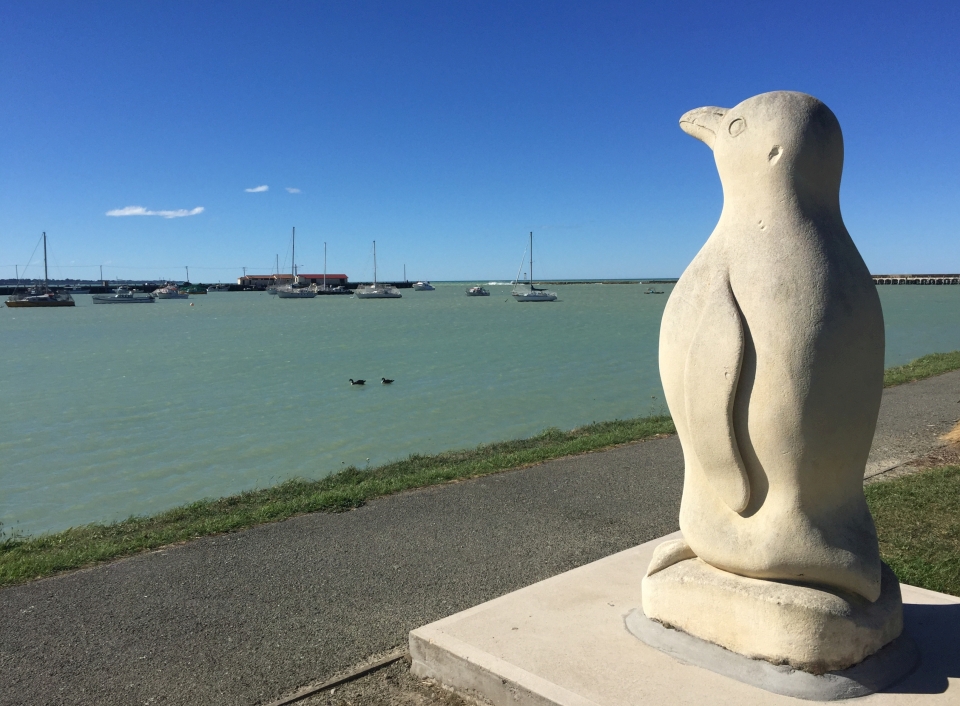
Oamaru is also home to kororā or little blue penguins. A colony on the edge of the harbour attracts tourists from all over the world. Image: Shelley Hersey, LEARNZ.
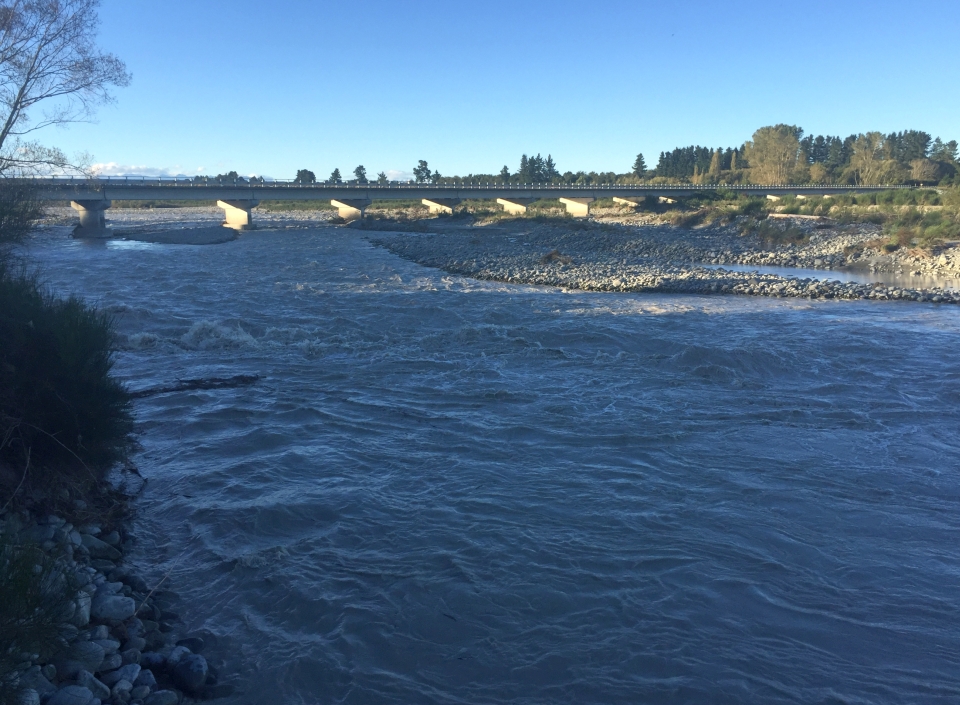
The braided Rangitata River was in flood after all the heavy rain in the mountains. Image: Shelley Hersey, LEARNZ.